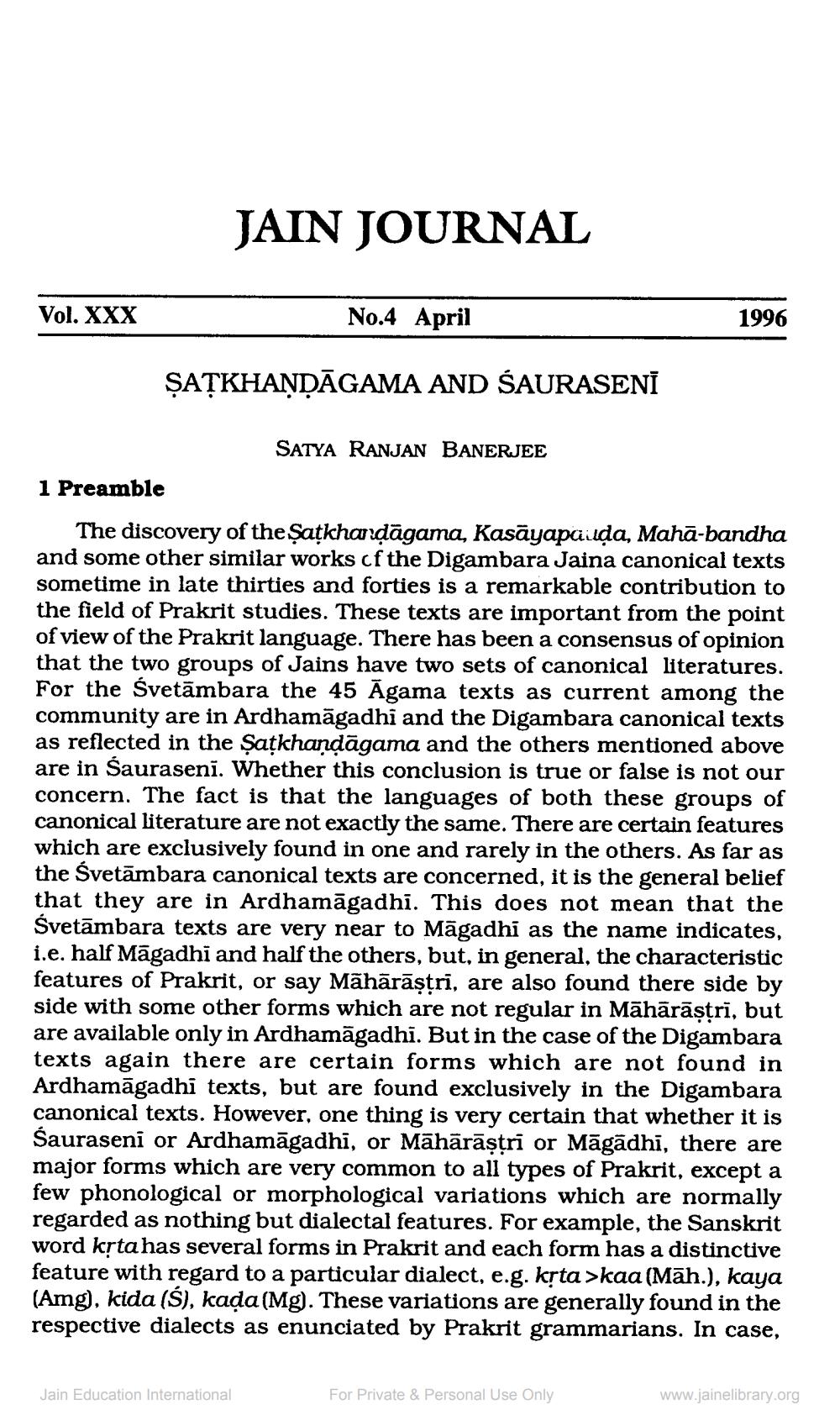Book Title: Jain Journal 1996 04 Author(s): Jain Bhawan Publication Publisher: Jain Bhawan Publication View full book textPage 3
________________ JAIN JOURNAL Vol. XXX No.4 April 1996 ȘAȚKHAŅDĀGAMA AND SAURASENI SATYA RANJAN BANERJEE 1 Preamble The discovery of the Satkhadāgama, Kasāyapaida, Mahā-bandha and some other similar works of the Digambara Jaina canonical texts sometime in late thirties and forties is a remarkable contribution to the field of Prakrit studies. These texts are important from the point of view of the Prakrit language. There has been a consensus of opinion that the two groups of Jains have two sets of canonical literatures. For the Švetāmbara the 45 Āgama texts as current among the community are in Ardhamāgadhi and the Digambara canonical texts as reflected in the Satkhanļāgama and the others mentioned above are in Sauraseni. Whether this conclusion is true or false is not our concern. The fact is that the languages of both these groups of canonical literature are not exactly the same. There are certain features which are exclusively found in one and rarely in the others. As far as the Svetāmbara canonical texts are concerned, it is the general belief that they are in Ardhamāgadhi. This does not mean that the Śvetāmbara texts are very near to Māgadhi as the name indicates, i.e. half Māgadhi and half the others, but, in general, the characteristic features of Prakrit, or say Māhārāștri, are also found there side by side with some other forms which are not regular in Māhārāstrī, but are available only in Ardhamāgadhi. But in the case of the Digambara texts again there are certain forms which are not found in Ardhamāgadhi texts, but are found exclusively in the Digambara canonical texts. However, one thing is very certain that whether it is Sauraseni or Ardhamāgadhi, or Māhārāștri or Māgādhi, there are major forms which are very common to all types of Prakrit, except a few phonological or morphological variations which are normally regarded as nothing but dialectal features. For example, the Sanskrit word krta has several forms in Prakrit and each form has a distinctive feature with regard to a particular dialect, e.g. kệta >kaa (Māh.), kaya (Amg), kida ($), kada (Mg). These variations are generally found in the respective dialects as enunciated by Prakrit grammarians. In case, Jain Education International For Private & Personal Use Only www.jainelibrary.orgPage Navigation
1 2 3 4 5 6 7 8 9 10 11 12 13 14 15 16 17 18 19 20 21 22 23 24 25 26 27 28 29 30 31 32 ... 55
